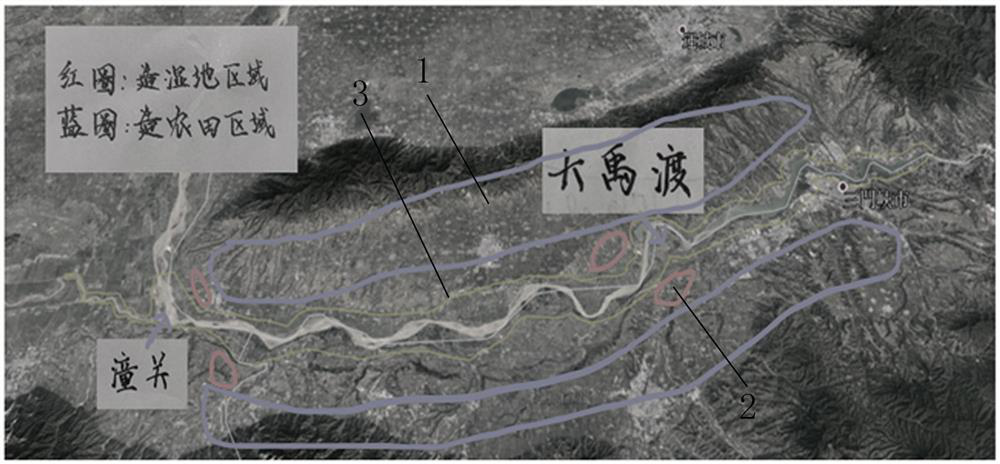Reservoir silt configuration method
A method of disposing sediment and sediment technology, which is applied in water conservancy projects, sea area projects, buildings, etc., to avoid damage, increase agricultural economic benefits, and improve the surrounding ecological environment.
- Summary
- Abstract
- Description
- Claims
- Application Information
AI Technical Summary
Problems solved by technology
Method used
Image
Examples
Embodiment 1
[0027] Example 1, due to the sedimentation problem, the water storage performance of many reservoirs will be reduced, especially the reservoirs in sandy rivers. Due to the serious sedimentation, the normal water storage function of the reservoir will be reduced, and the water level of the reservoir will also be reduced due to sedimentation. However, dredging is the main way to remove sediment at present, and how to deal with the large amount of sediment removed is an urgent problem to be solved.
[0028] In view of the above problems, this embodiment provides a reservoir sediment allocation method. In the first step, dredging, the surveyors measure and determine the dredging position in the river channel of the reservoir area, and use dredgers to work in the reservoir area. The dredgers use mud pumps to The silt is pumped from the river to the cabin for storage. At the same time, open areas are set up on both sides of the river in the reservoir area. After the cabin of the dred...
Embodiment 2
[0034] Embodiment 2, a reservoir sediment configuration method in this implementation will be described centering on the differences from Embodiment 1.
[0035] In this embodiment, the sand dredger adopts small-scale vertical transportation and large-scale vertical transportation to process the silted sediment, transport the sediment from the upper reaches of the river to the downstream of the river for farmland or wetland construction, or transport the sediment from the lower reaches of the river to the upper reaches of the river Make fields or create wetlands.
Embodiment 3
[0036] Embodiment 3, a reservoir sediment configuration method in this implementation will be described centering on the differences from Embodiment 1.
[0037] In this embodiment, the packing layer includes an upper layer and a lower layer. The lower packing layer is laid with limestone with a particle size of 5-10mm or gravel and granite stones with different grades. The thickness of the lower packing layer is 300-400mm; the upper packing layer uses 5-10mm Limestone with particle size is paved with mixed soil with a calcium content of 2-2.5kg / 100kg, and the thickness is 150-250mm. After the filler layer is laid, the slurry is uniformly transported through the pipeline sand transport equipment, and the grout is evenly laid and planted. Plants with well-developed tubes and root systems are irrigated with water to form a wetland system.
PUM
 Login to View More
Login to View More Abstract
Description
Claims
Application Information
 Login to View More
Login to View More - R&D
- Intellectual Property
- Life Sciences
- Materials
- Tech Scout
- Unparalleled Data Quality
- Higher Quality Content
- 60% Fewer Hallucinations
Browse by: Latest US Patents, China's latest patents, Technical Efficacy Thesaurus, Application Domain, Technology Topic, Popular Technical Reports.
© 2025 PatSnap. All rights reserved.Legal|Privacy policy|Modern Slavery Act Transparency Statement|Sitemap|About US| Contact US: help@patsnap.com



